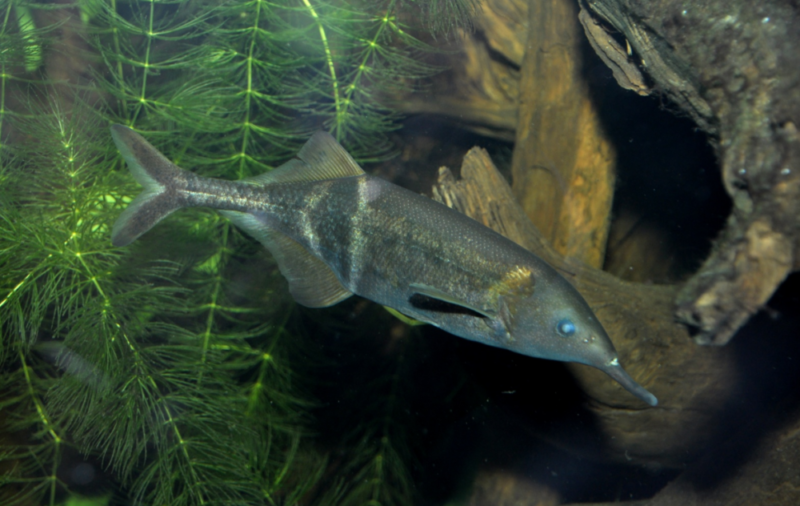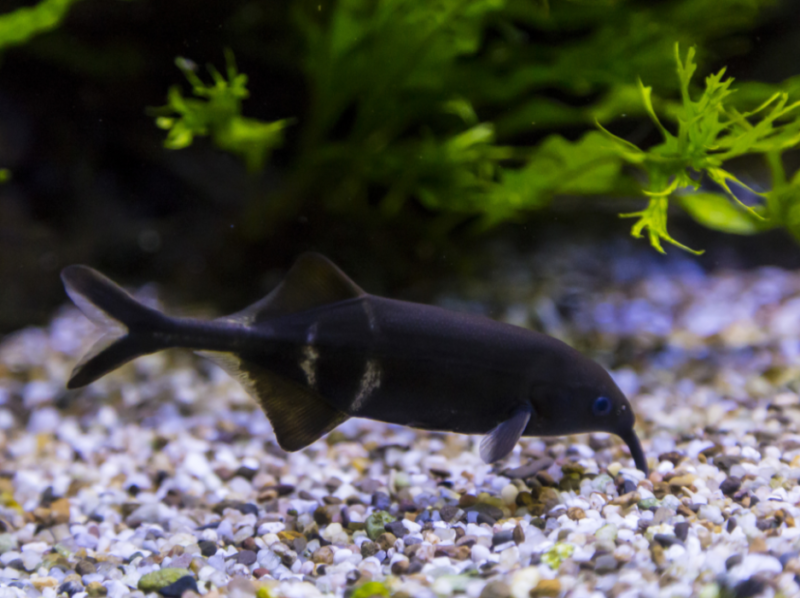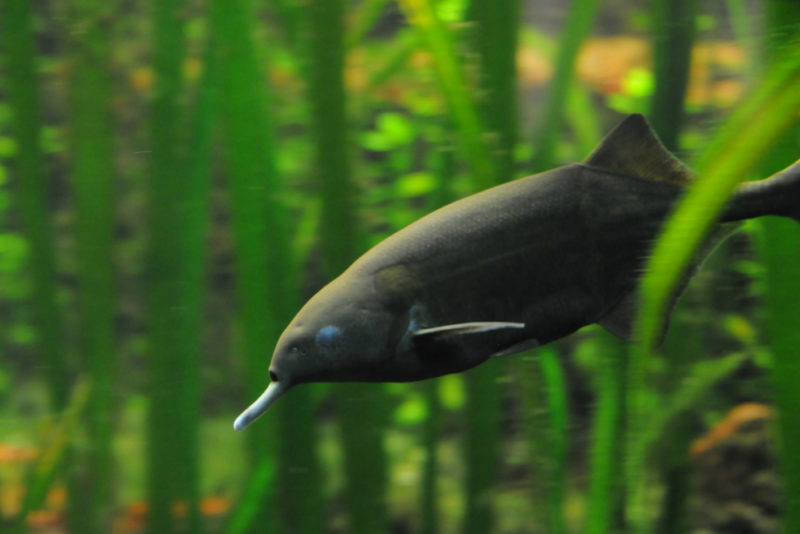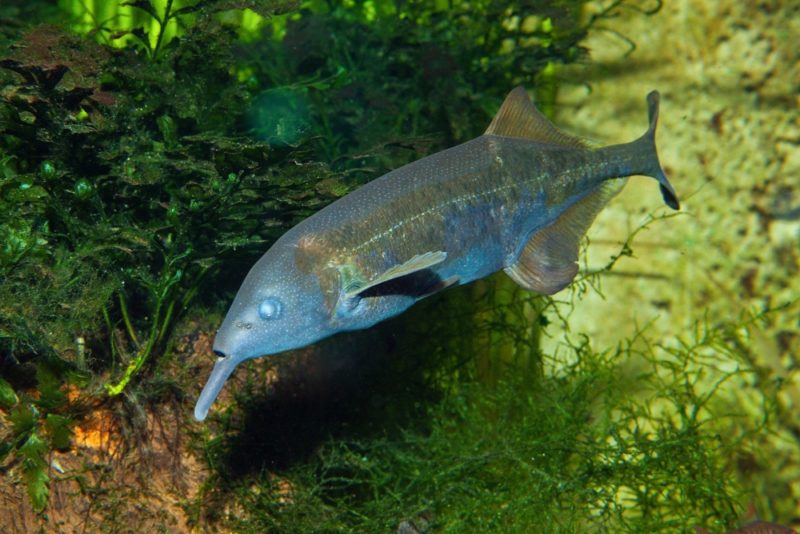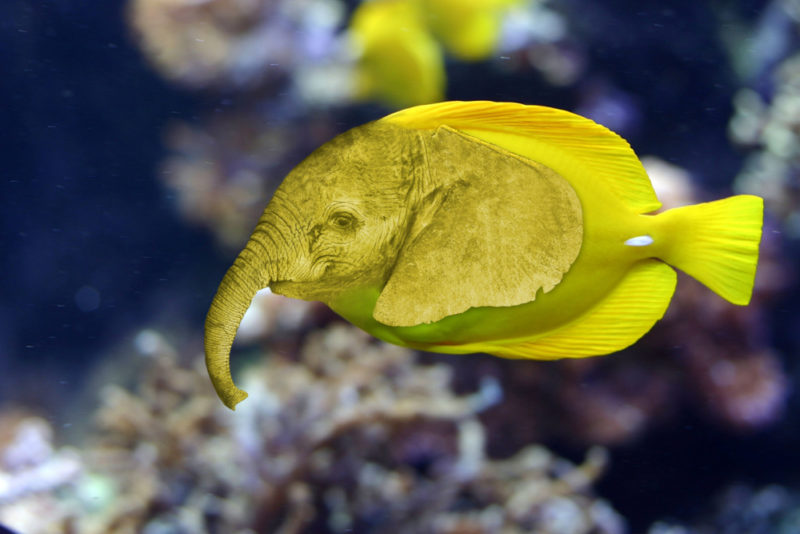Gnatonem Peters is a rare aquarium fish that has an unusual appearance. This individual is easily recognizable by its long lip, which is more like a trunk. However, it was for this distinguishing feature that they called her the elephant fish.
Material Content:
Description of the species of fish elephant
This representative of the Mormirov family does not grow more than 25 cm, so it is great for a home aquarium. The life expectancy of fish with a trunk directly depends on the conditions of detention, everything is individual here. Although there is officially confirmed data on individuals who survived to 25 years.
The main feature of Peters is his "trunk", located on the lower lip, with the help of which the Nile elephant gets its food. And already right above it is a completely ordinary mouth.
The trunk is elongated, moreover, this species has no ventral fins, but the pectoral fins are raised. Dorsal and anal fins located asymmetrically to each other and are located at the base of the tail.
As for the color, it is not so noticeable in the individual. Usually this is a black-brown body, and near the caudal fin there are two white stripes.
Habitat
In nature, the elephant fish lives in freshwater reservoirs in Africa, more precisely, in the central and western regions. Especially often they can be found on the Congo River, it is from there that they are mainly driven. Moreover, these representatives of the Mormirovian family prefer muddy waters with a slow flow.
Small river inhabitants choose silted areas, the bottom of which is abundantly overgrown with grass. And also there are driftwood, logs where they can hide.These individuals prefer places where the sun's rays do not penetrate brightly, and most of all they like weak dim lighting.
Lifestyle & Nutrition
Nile elephants are rather shy, and therefore need shelter. When kept in captivity, this factor must be taken into account. In addition, they are extremely sensitive to water composition, any deviations can cause illness, and in some cases even death. Activity in fish with a trunk begins in the evening and continues at night. Peters elephants are very choosy in food, so the choice of food should be approached responsibly.
In the natural environment, the fish is looking for food with its flexible trunk, which can rotate in different directions.
Nile elephant prefers:
- tubule
- bloodworm;
- small meat pieces;
- low-fat fish;
- worms.
At home, they can be fed with the same insects, supplement the diet with freezing, cereal.
It should be noted that these aquarium inhabitants eat rather slowly, so you should not keep them with fish that are able to take food from them. Feeding is best done in the evening, then the exotic inhabitants of the aquarium will always be full.
Features of reproduction of the Nile elephant
In fact, it is almost impossible to distinguish a female from a male. They do this solely by the strength of the electric field, but as a rule, it will also be extremely difficult for ordinary breeders to make such a calculation.
As for breeding, in captivity these fish do not breed, so they are exported from nature. As scientific research has shown, keeping in an aquarium distorts the impulses that the Nile elephant produces, and this prevents them from identifying a partner. Therefore, getting replenishment of this variety at home does not work.
In the natural environment, puberty in representatives of the Mormirov family occurs at the age of two, moreover, the female can lay about 2000 eggs at a time, which in two weeks turn into fry.
How to keep in the aquarium
In order for an aquarium fish to feel comfortable, it needs to provide some conditions:
- water temperature should be 22–28 degrees;
- hardness varies between 5–15 dH;
- acidity from 6 to 7.5 pH.
In addition, it must be borne in mind that Mormiridae are schooling fish, so several individuals should be kept in the aquarium. For 5–7 elephants, a capacity of 180–200 liters is required. The more inhabitants, the more spacious the tank should be.
And you should also think about lighting and content in advance. In the aquarium, it is imperative to provide for dim areas. Ideally, it is better to buy floating algae, large-leaved vegetation, where elephants prefer to hide if necessary.
It could be:
- Anubias
- giant wallisneria;
- varieties of alternaters.
The tank needs to be equipped with a lid, as these fish are quite jumping and are capable of involuntarily "leaving" the limits of their habitat. Sand or processed peat crumb is surely sprinkled to the bottom: elephants are very fond of digging in the ground.
As for water, it needs to be changed periodically, moreover, it must be well-defended, since Mormirovye are very sensitive to chemicals. And it is also worth equipping the tank with a powerful filter and aeration system.
And you should also think about the peace-loving neighborhood with them. The fish get along well with the peaceful species, but aggressive predators will have to be abandoned. Small individuals will not be able to coexist calmly with large brothers.
Interesting Facts
Nile elephants are amazing fish with a unique appearance and unusual abilities.
Few know that Arabs treat them with superstitious fear, since they consider river inhabitants to be able to "see" by tail.
In fact, repeated studies have disproved this possibility.A fish with a trunk only has such a part of the skeleton that is able to create an electromagnetic field. And if some object falls into its radius, the field is distorted, as it were, and the elephant feels these changes well. Even if just a grain of sand fell next to him. Actually, therefore, it’s very difficult to catch Mormirs on a fishing net or fishing rod.
There are other interesting facts related to this species. For example, Germans and Americans specifically purchase this fish to test water quality. In addition, elephants have a large brain, which is comparable in size to the human. This rare family of river inhabitants, because the fish is considered poorly understood.


